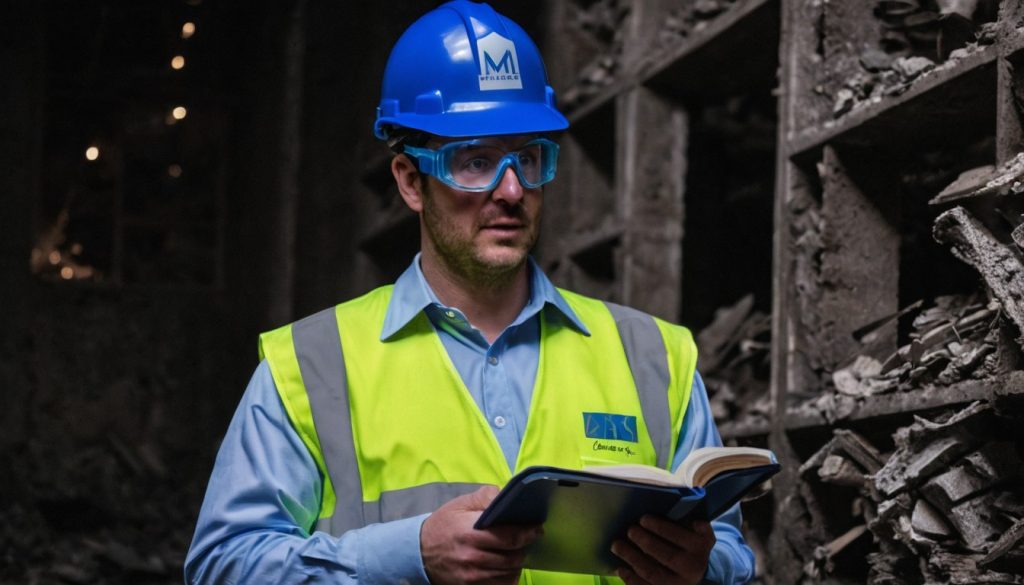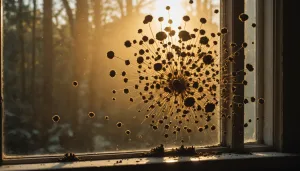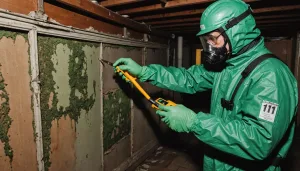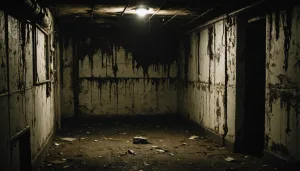In the aftermath of a fire, the urgency to restore your home and return to normalcy can often lead to overlooking essential safety measures. Ignoring safety protocols during fire restoration is a common mistake that homeowners must actively avoid. Safety should always be the top priority, as failure to adhere to established guidelines can result in further damage, health issues, or even legal consequences.
Immediately following a fire, it is crucial to assess the structural integrity of the property. Entering a building that hasn’t been declared safe can be hazardous. Smoke and soot may have compromised the structural soundness of walls, ceilings, and floors. Hazardous chemicals from burnt materials can also linger in the air or rest on surfaces, necessitating the use of appropriate personal protective equipment (PPE), such as respirators, gloves, and eye protection.
Furthermore, electrical systems may have suffered significant damage. It is crucial to ensure that all electrical matters are checked by a qualified electrician to prevent short circuits or potential electrocution hazards. Gas leaks are another critical concern; a certified professional should conduct inspections and necessary repairs to the gas systems.
In the broader scope of fire restoration, adhering to safety protocols includes proper ventilation of the premises to dissipate harmful gases and fumes and securing the area to prevent unauthorized access, reducing liability risks. Homeowners might feel tempted to expedite the process by tackling some of these issues themselves; however, without the proper expertise and understanding, they may inadvertently cause harm.
| Safety Concern | Potential Risk | Recommended Action |
| Structural Integrity | Collapse/Injury | Inspection by a structural engineer |
| Airborne Toxins | Respiratory issues | Use of PPE and professional cleaning |
| Electrical Hazards | Fire/Shock | Review by an electrician |
| Gas Leaks | Explosion/Fumes Exposure | Investigation by a professional |
One should never underestimate the importance of conforming to fire safety codes and regulations. These guidelines are not only there to protect the health and safety of the individuals involved; they are also legally binding and help prevent further consequences down the line. Engaging with licensed contractors who understand and comply with these safety protocols is critical in ensuring a thorough and safe restoration process.
Homeowner mistakes are often the result of misinformation or a lack of knowledge about the severity of what post-fire conditions might entail. By staying informed and consulting with experts on fire restoration and safety, one can avoid the perils that ignoring safety protocols might present.
Delaying the restoration process
Procrastination may be an enemy when it comes to dealing with the aftermath of a fire. Delaying the restoration process is a common mistake that many homeowners make for various reasons, including financial constraints or the belief that there’s no immediate harm in waiting. However, postponing restoration can exacerbate existing issues and introduce new ones, making the process more challenging and costly in the long run.
All homeowners need to understand the critical nature of timely action in fire restoration. Here’s a step-by-step outline of what to do to avoid the pitfalls of delayed response:
- Assessment and Prioritization: As soon as it is safe and possible, arrange for a professional assessment of the damage. This evaluation should prioritize the most urgent repairs and identify potential risks, such as structural instabilities or areas at risk of further deterioration. Timing is crucial because issues not immediately visible can worsen, leading to additional structural damage.
- Documentation for Insurance: Before starting any cleanup or repair work, document the damage extensively for your insurance claims. Photographs and detailed notes can facilitate a smoother and quicker insurance process, reducing the waiting period for approval of emergency and long-term restoration work.
- Professional Engagement: Engage with certified fire restoration specialists promptly. Their experience and expertise are invaluable in addressing the immediate needs and preventing secondary damage from smoke, soot, and water used during firefighting efforts. Delaying professional intervention can result in more profound damage, such as mold growth from untreated moisture, which complicates restoration further.
- Immediate Protective Measures: Initiate short-term protective measures to mitigate further damage. This includes securing the property by boarding up openings, removing excess water, and ventilating the area to reduce humidity and prevent mold escalation. Although these measures are temporary, they are essential in controlling and minimizing additional harm to the property.
- Communication and Updates: Maintain open and consistent communication with restoration professionals and your insurance company. Understanding each facet of the restoration timeline and potential delays helps keep the process moving forward, ensuring a more efficient restoration outcome.
Fire restoration, safety, and addressing subsequent concerns promptly are intertwined. Delays not only elevate the risk of worsening conditions but also place homeowners at risk of health hazards associated with lingering smoke and soot. By prioritizing action and involving professionals early on, homeowners can avert the typical mistakes associated with delays and set a clear path toward recovery and restoration.
Using the wrong cleaning methods
Many homeowners, in their eagerness to clean up and restore their property after a fire, fall into the trap of using inappropriate cleaning methods. This mistake can complicate fire restoration efforts and may even cause more harm than good. Understanding the right cleaning techniques and products is essential to preserving the integrity of your home and health.
Different materials require specific cleaning approaches, and not all cleaning methods are compatible with fire-damaged environments. For instance, using water on soot-covered surfaces can result in a sticky residue that is challenging to remove and that may embed soot particles deeper into the material. Instead, dry cleaning methods, such as using a high-efficiency vacuum or chemical sponge, are often recommended for initial cleaning to gently lift soot from surfaces without causing additional damage.
Moreover, household cleaning agents should be used cautiously, as they can react with smoke and soot residues. These residues may have a complex chemical composition, especially if synthetic materials were involved in the fire. Inappropriate cleaners might exacerbate odors or produce irritating fumes, making them unsuitable for post-fire environments. Instead, specialized cleaning solutions developed for fire-damaged properties can be more effective and safer in removing smoke and soot deposits.
A critical aspect of effective fire restoration is addressing the potential secondary damage caused by incorrect cleaning methods. For example, using abrasive tools on delicate surfaces can scratch or damage them permanently, while neglecting to address the removal of embedded smoke odors can lead to persistent smells that affect indoor air quality. Not only does this present health risks, but it can also make living conditions uncomfortable, undermining recovery efforts.
The complexity of dealing with fire damage underscores the necessity of relying on professional guidance in selecting the proper cleaning methods. Experienced fire restoration specialists have the knowledge and tools required to assess the properties of smoke and soot residues and determine the safest and most effective ways to clean affected areas. Their expertise includes understanding when to deploy advanced cleaning technologies, such as thermal fogging or ozone treatments, to eradicate odors and ensure a thorough restoration process.
In recognizing homeowner mistakes associated with cleaning, it is evident that precision and knowledge are your best allies in fire restoration. By avoiding the temptation to act hastily and opting for professional expertise, homeowners can avoid the setbacks and complications of using incorrect cleaning methods, thereby protecting their property and facilitating a smoother, more successful recovery.
Overlooking hidden damage
Often, the visible damage from a fire can overshadow less apparent, yet equally critical, issues lurking beneath the surface. Overlooking hidden damage is one of the more commonly overlooked homeowner mistakes in fire restoration, leading to prolonged and potentially costly repairs down the line. While the allure of addressing the most conspicuous damage first is understandable, it’s crucial to remember that smoke, heat, and firefighting efforts can impact areas not immediately visible.
One such area of concern is the structural integrity beneath floors and behind walls. While walls and ceilings may appear sound, the intense heat of a fire can weaken the building materials, leading to potential structural failures in the future. Similarly, hidden water damage from firefighting efforts can lead to mold growth and wood rot if not properly identified and addressed. Having a professional inspection can uncover these issues early, preventing them from escalating to more severe problems.
Another often-overlooked aspect is the condition of electrical systems. Fires can cause electrical wiring to melt or short-circuit, posing a significant safety hazard if left unchecked. Inspecting these systems thoroughly with the help of a qualified electrician ensures they are functional and safe, reducing the risk of future electrical fires or failures.
Plumbing systems, too, can suffer hidden damage. Pipes may be warped or cracked by heat, leading to leaks or even burst pipes later on. Engaging a plumber to examine the plumbing system can help ascertain any damage that must be remedied before they lead to more considerable water damage issues.
Additionally, hidden spaces, such as attics and crawl spaces, are often rich in insulation materials and other components highly susceptible to smoke and soot infiltration. These areas are breeding grounds for ongoing smoke damage and odor issues if not properly cleaned. Smoke can permeate insulation, leading to persistent odors and reduced air quality, a concern not immediately visible but one that significantly impacts your living environment.
Being aware of these potential pitfalls means taking a proactive stance in the fire restoration process. Engaging with professionals early, who have the tools and experience to identify and correct these hidden damages, is crucial. By not overlooking these hidden dangers, homeowners can ensure a thorough restoration and a return to a safe and healthy living environment without the surprise of unforeseen issues arising in the future. Taking such preventive steps not only safeguards your home but also brings peace of mind, knowing that all aspects of the damage have been responsibly and diligently addressed.
Failing to hire professional help
In the wake of a fire, determining whether to hire professional help for restoration can be a daunting decision. Some homeowners might attempt a do-it-yourself approach in an effort to save money, which is one of the most common homeowner mistakes in fire restoration. However, the intricacies involved in returning a fire-damaged home to its former state often require a level of knowledge and expertise that only experienced professionals can provide.
Professional fire restoration specialists bring valuable expertise to the table. They possess a deep understanding of the nature of fire and smoke damage, which includes the ability to assess not just the visible destruction but also identify and address hidden damage. Their knowledge extends to the appropriate safety measures and use of specialized equipment that ensure comprehensive cleaning and restoration. This thorough approach is crucial, as DIY methods may not account for the unseen impacts of fire, such as smoke infiltration into air ducts or water residue from firefighting efforts, which can later lead to mold growth and structural weakening.
Moreover, professionals are equipped with industrial-grade tools and cleaning products that are significantly more effective than consumer-grade offerings. This allows for efficient removal of smoke and soot, eradication of odors, and restoration of affected areas to a habitable condition. Attempting to manage these tasks without the appropriate resources can lead to partial restoration at best, leaving lingering smoke smells or soot stains that continue to affect air quality and comfort.
In addition to technical capabilities, restoration professionals coordinate with insurance companies to streamline the claims process. Their documentation and reporting help ensure that all necessary repairs are covered, ultimately aiding homeowners in receiving appropriate compensation. Navigating the insurance claims process alone can be overwhelming, and missteps may delay the restoration process or reduce the coverage received.
The pressing urgency of restoring a home post-fire can lead to choices that overlook long-term consequences, particularly regarding homeowner mistakes in bypassing professional assistance. Opting for qualified help not only ensures that the entire restoration process is executed safely and thoroughly, but it also mitigates the risk of subsequent issues arising from inadequate handling of the aftermath. By leaning on the expertise of seasoned professionals, homeowners can focus on their recovery, reassured that their residence is in capable, knowledgeable hands.
In conclusion, navigating fire damage restoration requires awareness and careful decision-making. Avoiding common mistakes, such as ignoring safety protocols or opting for DIY solutions instead of hiring professionals, can greatly impact the success of the restoration. By understanding the correct approaches and engaging the right expertise, homeowners can ensure their property is restored safely and effectively, fostering a swift and smooth return to normal life.





